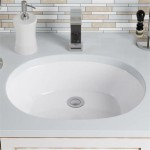How Low Should Pendant Lights Hang Over a Bathroom Vanity?
Pendant lights offer a stylish and functional lighting solution for bathroom vanities, providing both ambient and task lighting. However, determining the optimal height for hanging pendant lights is crucial for achieving the desired aesthetic, functionality, and safety. The correct placement ensures sufficient illumination for grooming tasks, prevents potential hazards, and complements the overall bathroom design.
Several factors influence the ideal pendant light height above a bathroom vanity. These include the ceiling height, the size and style of the pendant lights, the height of the individuals using the vanity, and the overall design of the bathroom. A careful consideration of these elements is necessary to achieve a balanced and well-lit vanity area.
Ceiling Height and General Guidelines
Ceiling height serves as a primary determinant in establishing the baseline height for pendant lights. In bathrooms with standard 8-foot ceilings, a general guideline dictates hanging the bottom of the pendant light approximately 30-36 inches above the vanity countertop. This measurement provides ample clearance for daily tasks and prevents the pendant from becoming an obstruction. For bathrooms with higher ceilings, such as those reaching 9 or 10 feet, the pendant lights can be hung slightly lower, closer to the 30-inch mark, to maintain visual connection and ensure adequate task lighting.
Conversely, in bathrooms with lower ceilings, less than the standard 8 feet, adjustments are required to prevent the pendant lights from feeling intrusive. In such spaces, consider raising the pendant lights higher, perhaps 36-40 inches above the vanity. Alternatively, opting for smaller pendant lights or flush-mount fixtures can be a more practical solution in low-ceilinged bathrooms, as they minimize the risk of head bumps and create a more open feel.
It is important to remember that these measurements serve as general guidelines and should be adapted to the specific context of each bathroom. Factors such as the size and style of the chosen pendant lights can further influence the ideal hanging height. Larger pendants may require more clearance, while smaller pendants can be hung slightly lower without feeling overwhelming.
Pendant Light Size, Style, and Spacing
The size and style of the pendant lights significantly impact the perceived height and aesthetic balance. Larger, more substantial pendant lights require careful consideration to avoid overwhelming the vanity area. These lights typically necessitate a slightly higher placement to prevent them from dominating the space or obstructing the view. In contrast, smaller, more delicate pendants can be hung slightly lower, close to the 30-inch mark, to create a more intimate and focused illumination.
The style of the pendant light also plays a crucial role in determining the optimal hanging height. For example, pendant lights with downward-facing shades may require a lower placement to effectively direct light onto the vanity surface. Conversely, pendant lights with exposed bulbs or translucent shades may benefit from a slightly higher placement to diffuse the light more evenly and reduce glare.
Proper spacing between multiple pendant lights is just as important as the hanging height. A common guideline is to space the pendants approximately 24-36 inches apart, depending on the width of the vanity. This spacing ensures even illumination across the entire vanity surface and prevents any areas from being overshadowed. The placement should also consider the location of the sinks. Pendant lights are often centered above each sink to provide focused task lighting for grooming activities.
If the vanity is particularly wide, incorporating three pendant lights instead of two can create a more balanced and visually appealing aesthetic. In such cases, ensure that the spacing between each pendant is consistent and appropriate for the overall width of the vanity. The goal is to achieve a harmonious and well-illuminated vanity area that enhances the functionality and aesthetic appeal of the bathroom.
User Height and Practical Considerations
The height of the individuals who will be using the vanity is an essential, yet often overlooked, factor in determining the ideal pendant light height. If the primary users are taller than average, hanging the pendant lights slightly higher becomes imperative to prevent them from bumping their heads. Conversely, if the users are shorter, slightly lowering the pendant lights can ensure they receive adequate task lighting without straining to see in the mirror.
Consider the activities that will primarily be performed at the vanity. If the vanity is primarily used for tasks requiring precise detail, such as applying makeup or shaving, ensuring the pendant lights provide ample and direct illumination is critical. In such instances, a lower placement may be beneficial. However, if the vanity is primarily used for general grooming tasks, a slightly higher placement can provide a more diffused and ambient light.
Practical considerations, such as access for cleaning and bulb replacement, should also be taken into account when determining the hanging height. Ensure that the pendant lights are easily accessible for routine maintenance. If the pendant lights are hung too high, reaching them for cleaning or bulb replacement may become challenging, requiring the use of a ladder or step stool. Conversely, if the pendant lights are hung too low, they may be prone to accidental bumps or damage.
Another practical consideration is the placement of the electrical junction box. Ideally, the electrical junction box should be centered above the vanity to allow for symmetrical and balanced pendant light placement. However, if the electrical junction box is off-center, adjustments may be necessary to ensure that the pendant lights are hung in a visually appealing and functional manner. This might involve using swag hooks or adjustable cords to compensate for the off-center placement.
Ultimately, determining the optimal pendant light height above a bathroom vanity involves a careful balancing act between aesthetic considerations and practical needs. By considering factors such as ceiling height, pendant light size and style, user height, and intended use, it is possible to achieve a well-lit, functional, and visually appealing vanity area.
Prior to permanently installing the pendant lights, it is advisable to temporarily hang them at different heights to assess the effect on the overall lighting and aesthetic. This allows for fine-tuning the placement and ensuring optimal results. Do this by having either yourself or another person hold the pendant light to the position you would like it to be place at while you visually assess if the height is ideal from both a distance and while standing directly in front of the vanity.
Furthermore, remember that even after installation, minor adjustments can sometimes be made, particularly with pendant lights that feature adjustable cords or chains. These adjustments can help fine-tune the lighting and ensure that it meets the specific needs of the users and the unique characteristics of the bathroom space.
Pendant Drop Tips For Incorporating Lights Into A Bathroom Design Remodeling

Unique Bathroom Pendant Lighting Ideas Riverbend Home

How To Get Your Pendant Light Right

How To Choose Bathroom Vanity Lighting Riverbend Home

9 Best Pendant Lights For A Bathroom Vanity 2024 Top Picks Installation Bulbs Bathtubber

How To Choose Your Bathroom Vanity Lighting

What Is The Proper Placement For Bathroom Pendant Sconces

The Best Types Of Bathroom Lighting Light Fixtures Modernize

9 Best Pendant Lights For A Bathroom Vanity 2024 Top Picks Installation Bulbs Bathtubber

All You Need To Know About Pendant Lighting In Bathrooms Havells Blog
Related Posts







